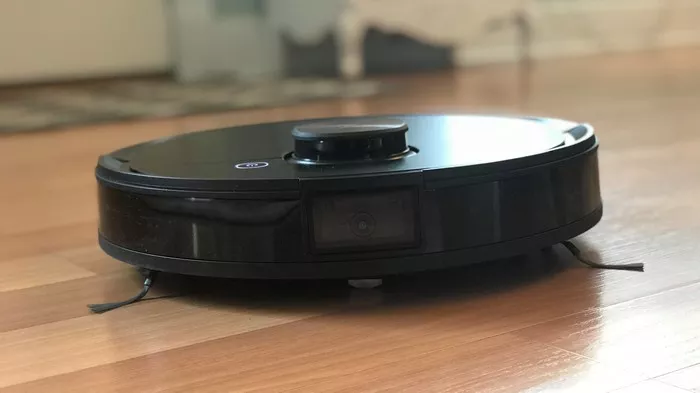Robot vacuums have transformed home cleaning by providing automated, hands-free operation. However, not all robot vacuums are the same. Some offer basic functionality, while others come equipped with advanced technology. To make an informed decision, you need to understand the key features that determine their performance, efficiency, and convenience.
1. Suction Power and Cleaning Performance
The Importance of Suction Power
A robot vacuum’s suction power is a critical factor in determining how well it picks up dirt, dust, and debris. Higher suction power ensures better performance, especially on carpets and rugs where dirt gets embedded deep within the fibers.
Adjustable Suction Levels
Many high-end models offer multiple suction levels. This allows the vacuum to adapt to different surfaces, using lower power on hard floors and higher power on carpets.
Brush System and Cleaning Efficiency
A combination of rotating brushes and a main roller brush enhances cleaning efficiency. Side brushes sweep debris into the vacuum’s path, while the main brush lifts dirt effectively. Models with rubberized or self-cleaning brushes reduce hair tangling, which is especially useful for pet owners.
2. Navigation and Mapping Technology
Random vs. Smart Navigation
Basic models move in random patterns, which can result in inefficient cleaning and missed spots. Advanced models use intelligent navigation, ensuring systematic and thorough cleaning.
Laser and Camera-Based Mapping
Premium robot vacuums utilize laser-based LiDAR technology or optical cameras to map your home and plan an efficient cleaning route. This prevents unnecessary backtracking and ensures every area is covered.
Obstacle Detection and Avoidance
High-tech robot vacuums can identify and avoid common obstacles like furniture, cables, and pet toys. Models with AI-powered cameras or 3D sensors recognize even small objects, preventing collisions and entanglements.
3. Battery Life and Charging Efficiency
How Long Does It Last?
A longer battery life is essential, especially for larger homes. Some vacuums can run for up to 150 minutes on a single charge, while others may only last 60 minutes.
Automatic Charging and Resume Function
Many modern robot vacuums automatically return to their charging dock when the battery runs low. Advanced models also resume cleaning from where they left off, ensuring uninterrupted operation.
4. Dustbin Capacity and Self-Emptying Feature
Standard Dustbin Size
Robot vacuum dustbins range in capacity from 0.3 to 0.6 liters. A larger bin means fewer trips to empty it, making the vacuum more convenient for everyday use.
Self-Emptying Functionality
Some high-end models feature an automatic emptying system. They deposit collected debris into a larger base station, reducing the frequency of manual emptying. This is a game-changer for people with busy schedules.
5. Floor Type Compatibility
Performance on Hard Floors
Most robot vacuums perform well on hardwood, tile, and laminate flooring. Models with soft-bristled brushes prevent scratching while efficiently picking up fine dust.
Effectiveness on Carpets and Rugs
Carpets require stronger suction and a rotating brush roll. Some vacuums automatically boost suction when transitioning onto carpeted surfaces for deeper cleaning.
Handling Pet Hair
Pet owners should look for models with tangle-free brushes and powerful suction to remove hair from carpets and floors. Some vacuums even have HEPA filters to capture pet dander, improving indoor air quality.
6. Smart Features and App Control
Wi-Fi Connectivity and Mobile App Control
Wi-Fi-enabled robot vacuums allow users to control and schedule cleaning sessions through a mobile app. This feature is convenient for remote operation, even when you’re not home.
Voice Control Integration
Many modern robot vacuums work with voice assistants like Alexa and Google Assistant. With simple voice commands, you can start, stop, or direct the vacuum to specific rooms.
Cleaning Schedules and Customization
Advanced models let you set cleaning schedules and select specific areas to clean or avoid. Some apps provide real-time mapping and cleaning history reports.
7. Noise Level and User Comfort
How Loud is a Robot Vacuum?
Noise levels vary among different models. Basic vacuums can be quite loud, while premium ones feature quieter motors and noise-dampening technology. A low-noise model is ideal for households with children, pets, or people who work from home.
8. Maintenance and Filter System
Ease of Maintenance
A robot vacuum with a removable, washable filter and easy-access dustbin makes cleaning hassle-free. Models with self-cleaning brush rolls reduce hair tangling, minimizing manual intervention.
Filtration System and Allergy Considerations
High-quality vacuums come with HEPA filters that capture allergens, dust mites, and fine particles. This feature is essential for allergy sufferers and improves air quality in your home.
9. Virtual Barriers and No-Go Zones
Preventing the Robot from Entering Certain Areas
Many robot vacuums offer virtual barriers or no-go zones to block off specific areas. Some use magnetic strips, while others allow users to set restricted zones through the mobile app.
Selective Room Cleaning
High-end models enable users to select specific rooms for cleaning. This feature is useful for targeting high-traffic areas or avoiding rooms with delicate objects.
10. Price and Value for Money
Budget vs. Premium Models
Entry-level models cost around $150-$300, offering basic cleaning capabilities. Mid-range options, priced between $300-$600, include smart navigation and app control. Premium models, exceeding $600, come with advanced AI features, self-emptying bins, and superior suction power.
Balancing Cost and Features
When choosing a robot vacuum, consider your budget and the features you truly need. If you have a small apartment with minimal cleaning needs, a budget-friendly model may suffice. However, for larger homes with carpets, pets, or heavy foot traffic, investing in a high-end model ensures better performance and convenience.
Conclusion
Choosing the right robot vacuum requires evaluating factors such as suction power, navigation technology, battery life, and smart features. Advanced models offer greater convenience with app control, self-emptying bins, and AI-powered obstacle avoidance.
A high-quality robot vacuum can significantly reduce household chores and keep floors spotless with minimal effort. By selecting a model that meets your specific cleaning needs, you can enjoy a cleaner home without the hassle of manual vacuuming.
Related topics:
What Are the 8 Best Dyson Vacuums for Carpets?

